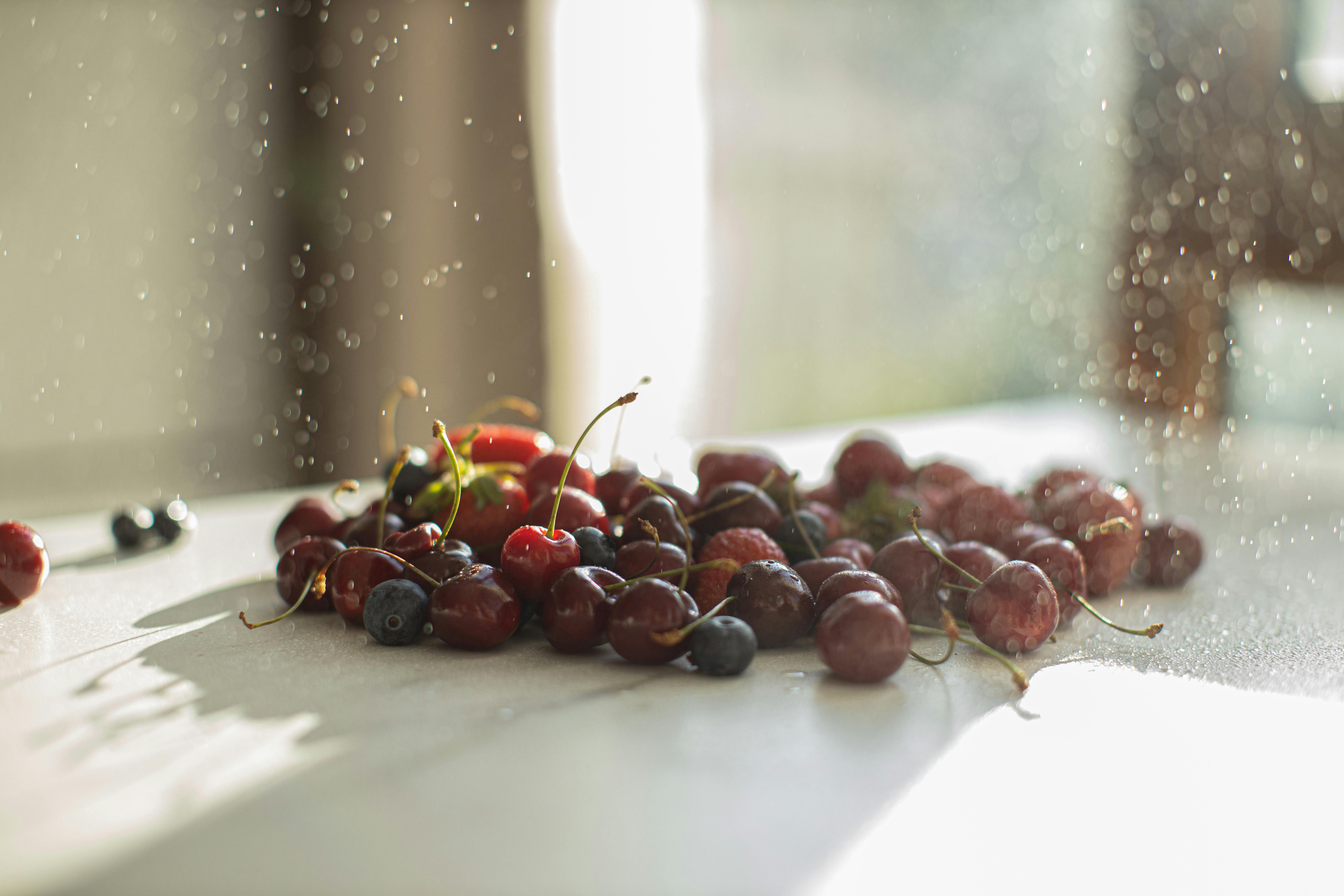Strawberries are a popular and delicious summer fruit, and they can be a great addition to any garden. But like any other plant, strawberries need the right amount of water to thrive. In this article, we will discuss how much water strawberries need to stay healthy and produce sweet, juicy fruit. We will also cover other important care tips for growing healthy strawberries.Strawberries need approximately 1 to 2 inches of water per week. It is important to ensure that the soil remains evenly moist and not soggy, as too much water can lead to root rot. Drip irrigation is an ideal way to provide consistent moisture without overwatering.
Climate
Climate is one of the most important factors that affect the water requirements of strawberries. Different climate conditions, such as temperature, humidity, and sunlight intensity, can influence the amount of water needed by strawberry plants. Temperature plays a major role in determining the amount of water needed by strawberries, as high temperatures can cause excessive evaporation from the soil. In addition, higher temperatures can cause increased transpiration from the leaves of strawberry plants, resulting in an increased need for water. Humidity can also play a role in how much water is needed by strawberries, as high humidity levels can reduce transpiration and therefore decrease water needs. Finally, higher levels of sunlight intensity can increase transpiration from leaves and therefore increase water needs.
Soil
The type of soil used for growing strawberries can also affect their water requirements. Soils with good drainage tend to require less water than soils with poor drainage. In addition, soils that are low in organic matter tend to require more frequent watering than soils with higher organic matter content. Sandy soils are generally more susceptible to drought conditions due to their low capacity to retain moisture. Clayey soils usually require less frequent watering but may suffer from compaction if over-watered.
Cultivation Practices
The practice used for cultivating strawberries is also an important factor affecting their water requirements. Strawberries grown in raised beds tend to require more frequent irrigation than those grown in flat beds due to faster drying out of the soil and greater exposure to direct sun radiation. The type of irrigation system used for watering strawberry plants can also have an effect on how much water is needed. Overhead sprinkler systems usually need more frequent irrigation than drip irrigation systems due to greater evaporation losses from the foliage.
Fertilization
Fertilization practices are also important when it comes to determining the amount of water needed by strawberry plants. Excessive fertilization can cause an increase in growth rate and therefore an increased demand for moisture from the soil. Nitrogen fertilizers are especially prone to leaching if applied too heavily or too frequently, resulting in an increased need for irrigation.
Soil Preparation for Planting Strawberries
Prepping the soil is an important step when planting strawberries. The soil should be well-draining and rich in organic matter, such as compost, to ensure proper drainage and nutrient availability. Adding aged manure or composted leaves to the soil can also help increase the nutrient content. The soil should also be tested for pH levels; strawberries prefer a slightly acidic soil with a pH between 5.5 and 6.5. If the pH level is too high, it can be adjusted by adding sulfur or elemental sulfur to the soil.
Prior to planting, it is important to till the soil deeply, at least 8-10 inches deep, to break up any large clumps of dirt and remove any debris that may be present in the soil. After tilling, rake the area flat so that it is level with no large bumps or depressions in the area where you will be planting your strawberries.
Finally, add a 2-3 inch layer of organic mulch over top of the area where you will be planting your strawberries. This will keep weeds from growing while also helping maintain moisture levels in the soil and keeping your strawberry plants healthy during hotter months.
Once you have prepped your soil for planting strawberries, you are ready to get started!
Amount of Watering for Established Strawberry Plants
Established strawberry plants require about 1 to 2 inches of water per week, depending on the weather conditions. Watering should be done in the morning, preferably before the sun rises, to minimize the chance of fungal diseases. Additionally, it is important to make sure that the soil is moist but not soggy. If the soil is soggy, then it can lead to root rot and other plant diseases. Make sure that you are watering deeply and evenly throughout the entire area where your plants are located. It is best to use a soaker hose or drip irrigation system when watering established strawberry plants. This will help conserve water and ensure that each plant gets an even amount of water.
In addition to regular watering, you may also need to fertilize your strawberry plants periodically in order to ensure healthy growth and abundant fruit production. The best time to fertilize is just after flowering has occurred but before berries start forming. You can use a balanced fertilizer like 10-10-10 or one specially formulated for strawberries like 7-9-5. Be sure to follow the instructions on the label for proper application rates and timing of applications.
Frequency of Watering for Established Strawberry Plants
Watering is essential for established strawberry plants to ensure they thrive and produce an abundant harvest. It is important to water your strawberry plants on a regular basis to keep the soil moist. How often you should water your plants will depend on several factors, including the type of soil, the climate, and the amount of rain received in your area. In general, established strawberry plants should be watered once per week or every other week if there has been a significant amount of rain.
When watering your strawberry plants, it is important to provide them with enough water so that the soil is evenly moist but not soggy. You can check the moisture level by sticking your finger into the soil up to the first knuckle; if it feels dry, it is time to water. Make sure to avoid over-watering as this can cause root rot and other issues that can kill your plants. Additionally, try to water in the morning or evening when temperatures are cooler so that more moisture is absorbed into the soil rather than evaporating due to excessive heat.
If you live in an arid climate where there is little rainfall throughout the year, you may need to increase your watering schedule depending on how much moisture has been lost from evaporation and wind. It is also important to make sure that any mulch material used around your plants does not become too dry during hot weather; if necessary, add more mulch or top it off with fresh material as needed for extra protection from heat and dehydration. By following these simple watering tips for established strawberry plants, you will ensure a healthy harvest all season long!

Signs of Under-Watering in Strawberry Plants
Despite being hardy and drought tolerant, strawberry plants need a regular water supply for optimal growth. Without enough water, the berries may fail to develop or taste sour. The leaves may turn yellow or brown and the plant will become stunted. To ensure proper growth and development of your strawberry plants, it’s important to recognize signs of under-watering.
One of the most common and obvious signs of under-watering is wilting foliage. When a plant does not have enough water, it will lose turgor pressure and cause the leaves to wilt or droop. This is an indication that your plants need more water right away.
Another sign of under-watering in strawberry plants is yellowed leaves. As with other plants, yellow leaves are usually caused by a lack of nutrients, but can also be an indication that the plant is not getting enough water. If you notice yellowed leaves on your strawberry plants, check the soil moisture and give them some extra water if needed.
A third sign of under-watering in strawberry plants is slow growth or stunting. When a plant does not have enough water, it will be unable to absorb the necessary nutrients from the soil and will fail to grow as quickly as normal. The plant may also become stunted or small in size due to lack of water.
Finally, berries that are small, misshapen, or sour can also be an indication that your strawberry plants are not getting enough water. If you notice these symptoms on your berries, check the soil moisture level and provide additional water if necessary.
By recognizing these signs of under-watering in strawberry plants early on, you can ensure that they get enough moisture for optimal growth and development. With proper care and attention, you can produce delicious strawberries for years to come!
Signs of Over-Watering in Strawberry Plants
Strawberry plants are notoriously sensitive to overwatering. Too much water can cause a variety of problems, from root rot and disease to stunted growth and yellowed leaves. Fortunately, there are some tell-tale signs that indicate when a strawberry plant is getting too much water. Knowing these signs can help you take action before the plant’s health takes a serious turn for the worse.
One of the most obvious signs of overwatering in strawberry plants is wilting leaves. Wilting occurs when the plant does not have enough water and its cells begin to break down, resulting in droopy leaves. However, wilting caused by overwatering often looks different from drought-induced wilting because it happens suddenly rather than gradually.
Another sign of overwatering in strawberry plants is yellowed or discolored leaves. This usually occurs when the soil remains soggy for too long, leading to an accumulation of salts in the soil which then draws moisture away from the plant’s roots and leaves.
Root rot is another common symptom of overwatering in strawberry plants. This happens when the roots are submerged in water for extended periods of time, causing them to rot and become discolored or mushy. In severe cases, it can lead to stunted growth or even plant death if not addressed quickly.
Finally, another sign of overwatering is an increase in pests and diseases such as fungal infections or aphids due to weakened resistance from soggy soil conditions and high humidity levels around the plant’s foliage. If left untreated, these pests and diseases can further weaken your strawberry plants until they die off completely.
By keeping an eye out for these signs of overwatering in your strawberry plants, you can take action before it’s too late and ensure that your plants stay healthy for many years to come!
Watering Methods for Growing Strawberries
Growing strawberries requires careful attention and proper watering techniques to ensure a successful harvest. Strawberries are sensitive plants and need consistent moisture to produce healthy fruit. Too much or too little water can cause problems with the plants, such as root rot or wilting leaves. To ensure optimal growth, it is important to understand the different methods of watering strawberries and how to properly use them.
The most common method of watering strawberry plants is by using a garden hose or sprinkler system. This method ensures that the soil stays evenly moist, allowing for even distribution of water throughout the plant’s root system. In addition, this method prevents water from pooling in one area and causing root rot. However, this method also uses more water than other techniques, so it should be used sparingly in areas with limited water resources.
Another popular method of watering strawberry plants is drip irrigation. This technique utilizes flexible tubes that slowly release water directly onto the soil around the plant’s roots. This helps to conserve water by only delivering moisture exactly where it is needed and preventing any runoff that could occur with overhead watering systems. Drip irrigation is especially helpful during hot summer months when evaporation can quickly deplete soil moisture levels.
Lastly, hand-watering is another effective way of providing moisture to strawberry plants. This involves using a garden hose or bucket to directly pour water onto the root zone of each plant individually. Hand-watering allows you to precisely control how much water each plant receives and ensure that no plant is overwatered or underwatered. To be most effective, hand-watering should be done on a regular basis so that all plants receive an adequate amount of moisture throughout their growing season.
No matter which method you choose for watering your strawberry plants, it is important to pay close attention to soil conditions and make adjustments as needed for optimal growth and yield potential. With proper care and attention, your strawberry patch can produce a bountiful harvest season after season!

Conclusion
Strawberries need a lot of water to grow and thrive. Water is essential for all parts of the plant, from its roots to its fruit, so adequate watering is essential. Strawberries need at least 1 to 2 inches of water per week in order to flourish. This water can come from rainfall or irrigation, but it is important to pay attention to soil moisture and adjust irrigation accordingly. Additionally, mulching can help retain moisture in the soil and keep weeds from competing for water with the strawberries.
Overall, proper watering is essential for healthy strawberry plants and delicious berries. By paying attention to soil moisture levels and providing adequate water, growers can ensure that their strawberries will be healthy and produce abundant harvests.



